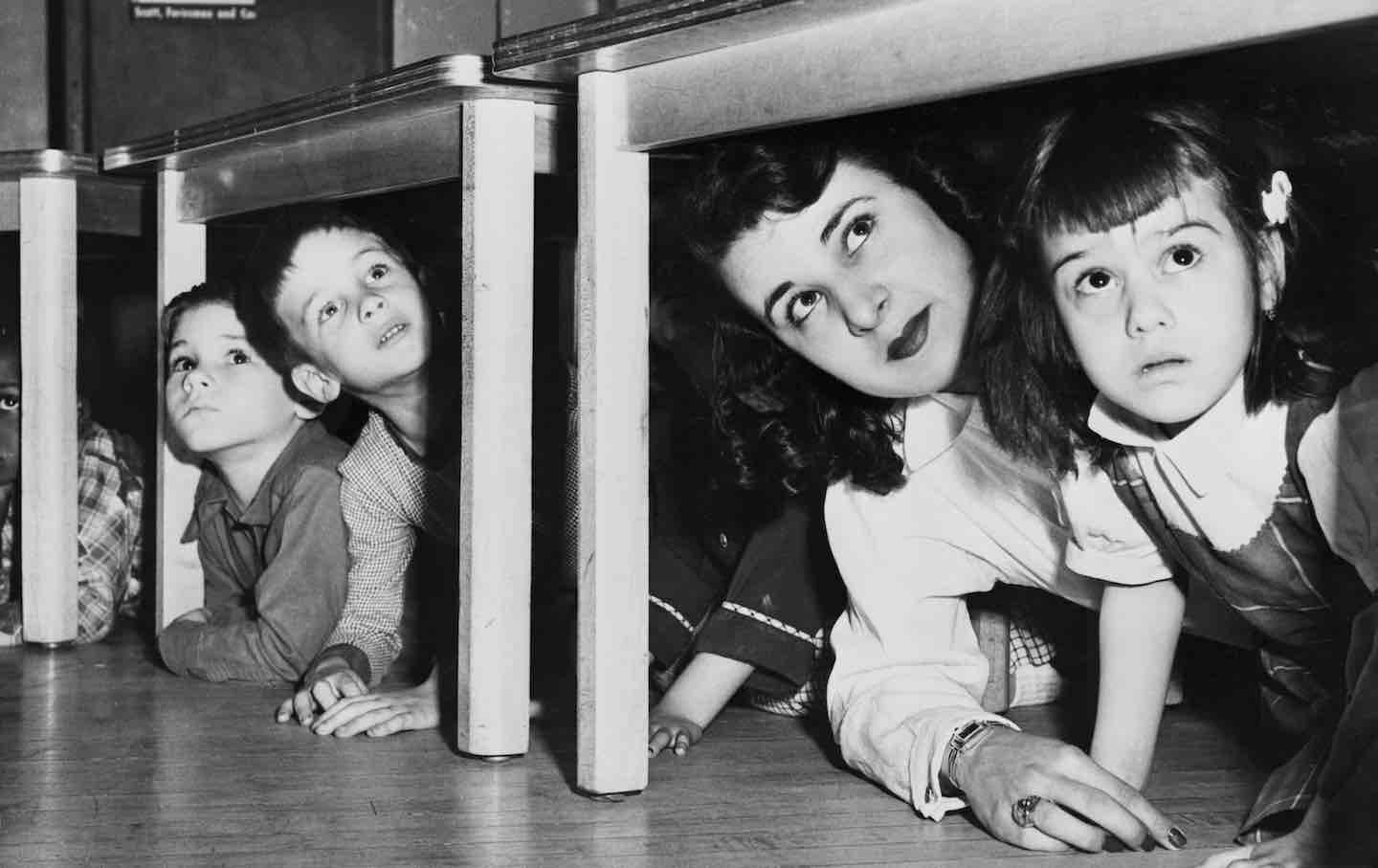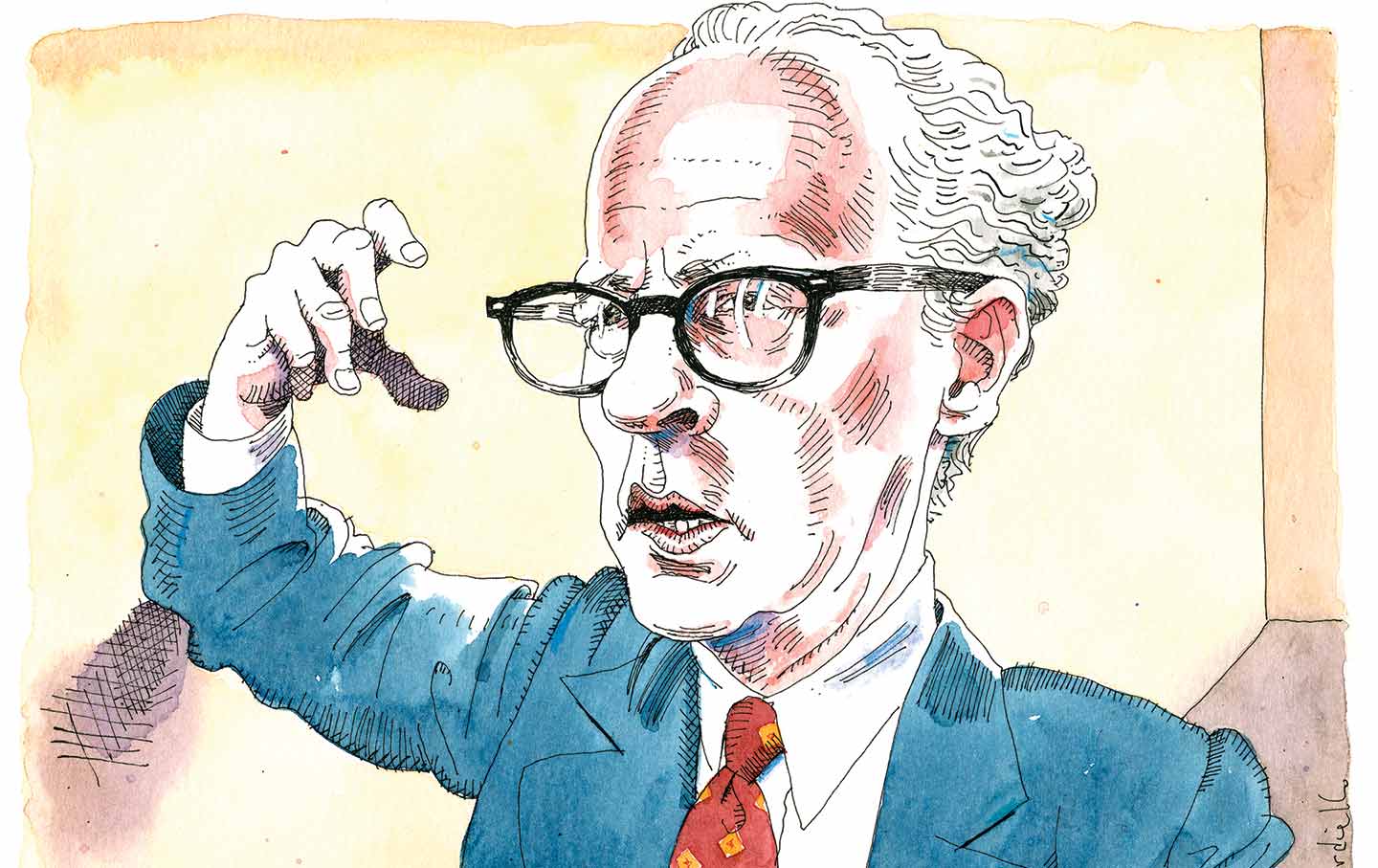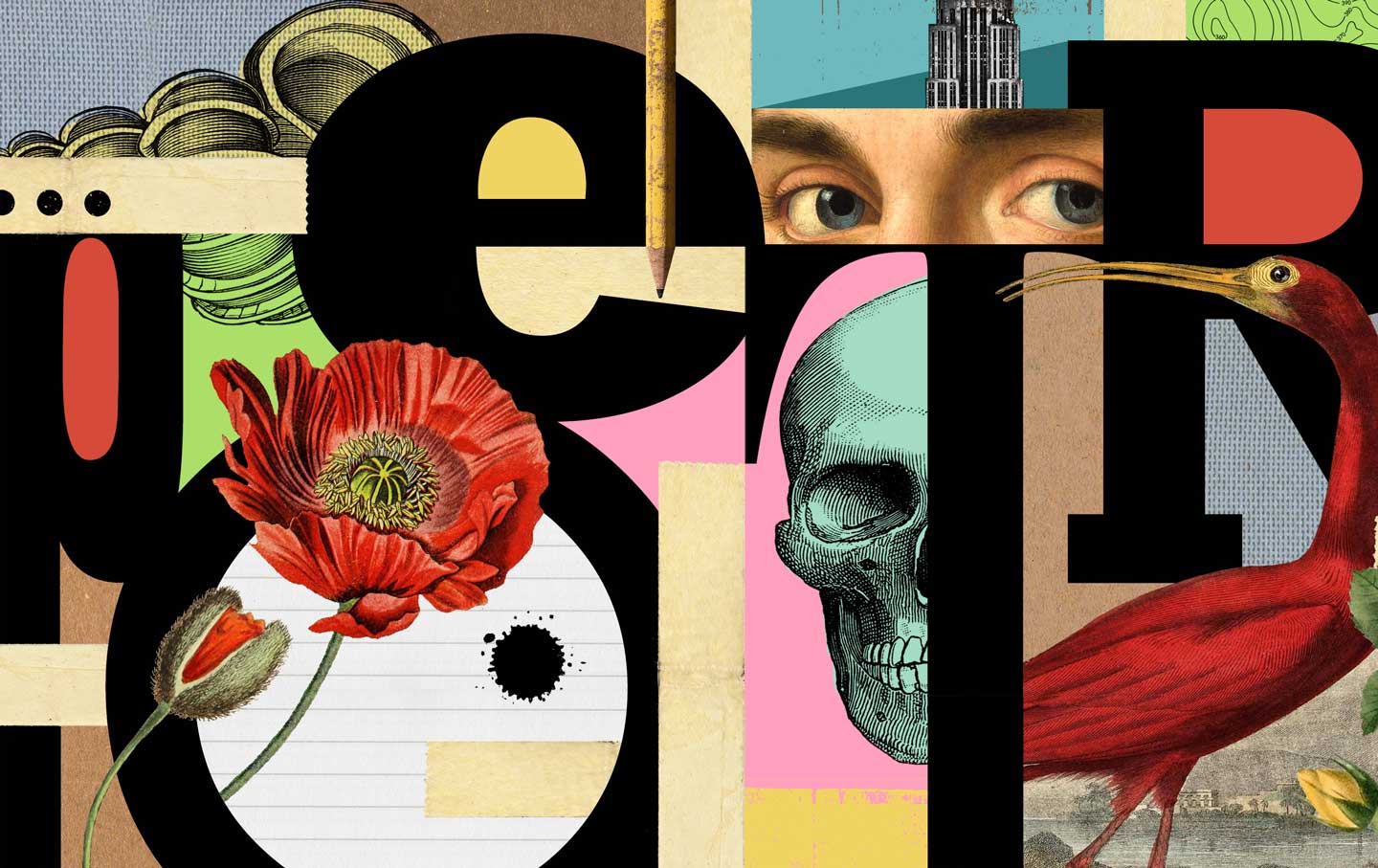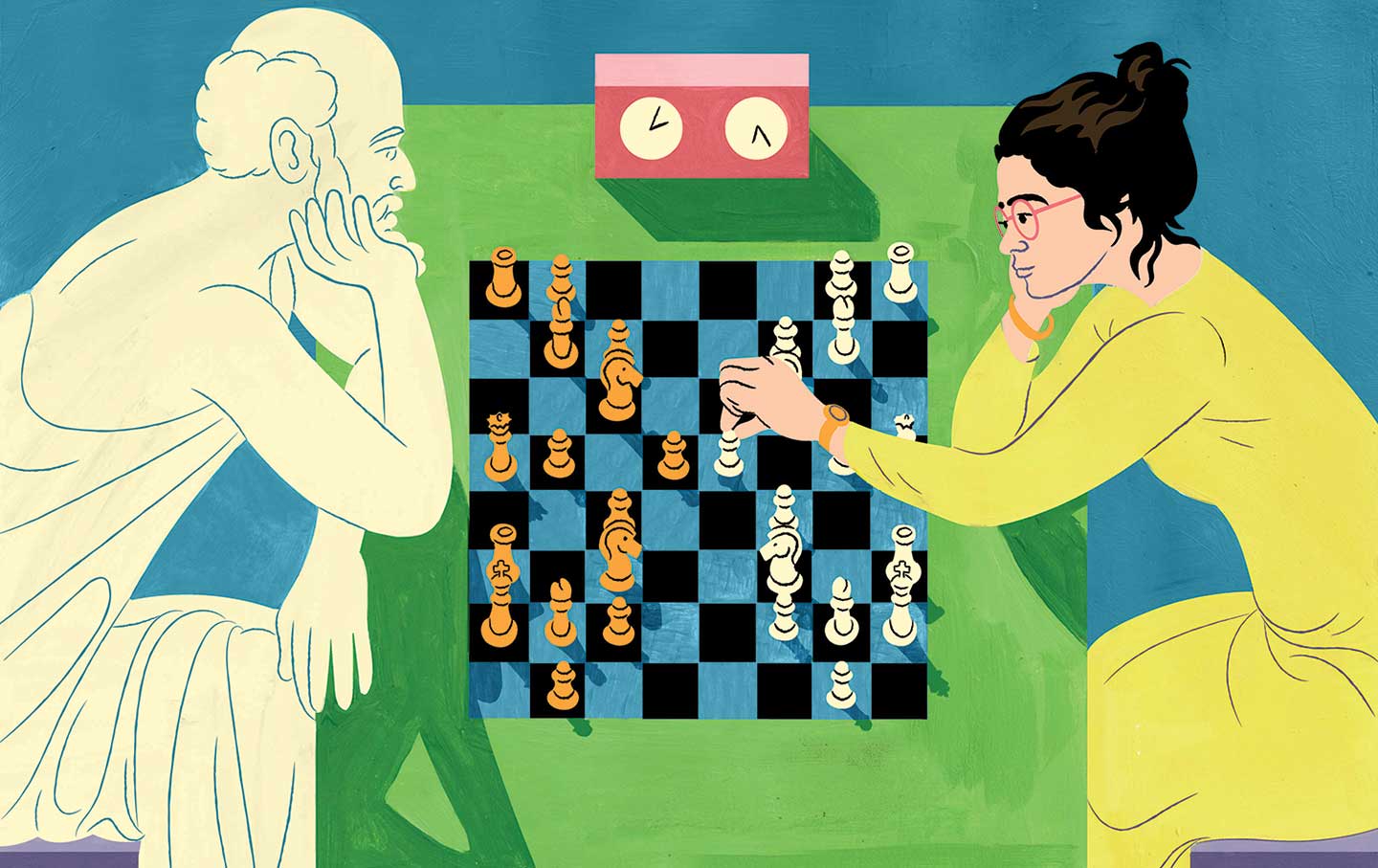Is Liberalism a Politics of Fear?
A conversation with Samuel Moyn about the Cold War’s profound and negative influence on the liberal worldview and his new book, Liberalism Against Itself.

Before the First World War, to be a liberal typically meant defending universal values and rationalism. Liberals had an optimistic view of human nature and believed in historical progress. The Second World War, the rise of facism, and the mobilization of a global military force to combat Nazism dealt a serious blow to this view. In its aftermath, new threats emerged in the form of Stalin’s Soviet Union, Mao’s China, and panic over the prospects of communism spreading around the globe. If liberalism had any chance of surviving, it would need to become more aggressive in its defense of freedom against the specter of communism. To the famous Cold War liberal intellectuals, liberal democracy was not predestined to succeed; it was fragile and in need of vigilant protection.
In his new book, Liberalism Against Itself, the Yale historian Samuel Moyn argues that at the very center of Cold War liberalism is a politics of fear—a fear that freedom might collapse into tyranny if a robust security state did not contain rival world powers. By examining the writings of Hannah Arendt, Judith Shklar, Gertrude Himmelfarb, Lionel Trilling, Karl Popper, and Isaiah Berlin, Moyn shows how Cold War liberalism turned against its 19th-century predecessor by morphing into a security doctrine rooted in this politics of fear. It’s therefore little wonder, Moyn argues, that Cold War liberalism is experiencing a revival today, given liberal anxieties over a new cold war with China, calls for NATO expansion due to the war in Ukraine, and fears of growing domestic fascism. The Nation spoke with Moyn about the major lessons of his new book. Our conversation has been edited for length and clarity.
—Daniel Steinmetz-Jenkins
Daniel Steinmetz-Jenkins: Do you have a working definition of “Cold War liberalism”?
Samuel Moyn: Liberalism is a conversation that we cannot understand as a set of defining commitments once and for all time. All liberals past and future care about freedom, for example, but they defend it in radically different ways and often prioritize other values. For that reason, I focus on how liberals in the mid-20th century blew up one canon and built another. In his own time, John Locke had not been a liberal (or been seen as one for centuries), while the breakthrough of the French Revolution made self-conscious liberalism possible. In the memory of the 20th century, Locke was retroactively anointed the father of the tradition, and not for the reasons he had once mattered to Americans—justifying armed insurrection or Native expropriation. Meanwhile, the French Revolution was purged from liberal sources merely because the Soviet Union claimed its legacy too.
Before then, liberalism had actually learned a lot from Marxist pressure to be more egalitarian and attentive to the broadest conditions of freedom, long relying on government to serve diverse ends and not obsessed by the threat of the state’s expansion or tyranny. But even while liberal politicians were building their own welfare states in practice, Cold War liberal theorists like Isaiah Berlin crafted an anti-Soviet form of the creed that relinquished much that had made liberalism more credible and progressive. This was a catastrophe, especially in the long run.
DSJ: How is Cold War liberalism a deviation from its earlier predecessor? You point out, for instance, that much of 19th-century liberalism promoted laissez-faire economics and was inseparable from European imperialism. Are you saying that this tradition offers better resources for the challenges of today’s world than Cold War liberalism?
SM: Emphasizing the mutation of liberalism in the middle of the 20th century naturally raises the possibility that there are better things to find and recover in its past, given how its present is working out. This doesn’t mean the book calls for a return to the 19th century. However, I do identify three features of that earlier liberalism worth reclaiming: its insistence on a highest good in life, as the first and main emancipatory political framework of modern politics; its commitment to some story of emancipation in history, orienting us between a past of less freedom and a future of more; and its agreement with Marxism that the conditions for the enjoyment of freedom and rights matter much more than their formal or legal annunciation. As you say, liberalism has always been haunted by its apology for the free market, but the Cold War liberals failed to defend the expansion of the state and the politics of redistribution that climaxed during their own lives. And while 19th-century liberals were often apologists for empire and all its violence, at least they had a program that was global in scale, in purporting to spread “civilization.” Early Cold War liberals, by contrast, treated “the West” as a kind of last redoubt of liberty, assuming global and non-white emancipation was a lost cause. Isn’t that worse?
DSJ: Usually, when we think of the Cold War liberal intellectuals, men are typically listed: Reinhold Niebuhr, Isaiah Berlin, Karl Popper, Raymond Aron, and Arthur Schlesinger Jr. With the exception of Berlin and Popper, however, you have assembled a different set that includes three women—namely, Hannah Arendt, Gertrude Himmelfarb, and Judith Shklar. You also have a chapter on Lionel Trilling. Why the different cast of characters?
SM: I selected them to illustrate certain neglected perspectives on Cold War liberalism, and to give women their due as pivotal thinkers. They helped me build that story of deaccessioning prior liberal resources in order to seek new ones—like Christianity or psychoanalysis. Some are valuable for thinking through the Jewish background of the Cold War liberals or their global politics. All of them combine to illuminate how the priorities of Cold War liberalism shifted. It wasn’t just a matter of a changing mood for liberalism, but one of abandoning past commitments in the presence of the Soviet foe in order to strip liberalism down to the defense of liberty.
DSJ: Let’s talk about the relationship between Cold War liberalism and neoliberalism via your chapter on the political philosopher and essayist Isaiah Berlin. He, of course, made a famous distinction between what he called “positive” and “negative” liberty. He argued that there must be some sphere in society in which individuals have the freedom of choice to make uncoerced decisions, an area of noninterference that he called “negative liberty.” And, on the contrary, he associated “positive liberty” with Soviet communists, “utopians,” and “fanatics,” as they promoted interfering in the lives of individuals in the name of achieving a deeper sense of freedom. Berlin’s “negative liberty” certainly involved a defense of the free market. But he and his defenders have denied, however, that this amounts to a defense of neoliberalism, which has done so much to undermine the welfare state. Are they right? More generally, do you see a natural affinity between Cold War liberalism and neoliberalism?
SM: I think it would be boring, not to mention mistaken, to approach thinkers in terms of their arguments alone. Berlin never did when writing the history of ideas himself. His essay on the two kinds of liberty was supposed to distinguish rather than endorse—but in real time, everyone understood that Berlin was championing liberty as noninterference from the state against the fraught and risky politics of self-realization that canonical earlier liberals like J.S. Mill and Alexis de Tocqueville believed in. It is true that Berlin was no neoliberal—though he was clearer about this point before and after the Cold War than during it. On the other hand, the Cold War liberals’ failure to theorize social freedom through the state—of the very kind that liberals in practice were building during the only egalitarian and redistributive era in their history—was fateful. The overlap in theory between Berlin’s libertarian posture and the neoliberal posture was enormous, and their hostility to the same earlier liberal traditions that revolved around statist progress was also shared in common. Neoliberalism came into being for lots of reasons, but Cold War liberalism left liberals out of position to defend against it.
DSJ: Whereas many Cold War liberals and their descendants have claimed they reject neoliberalism, it’s undeniable that many of them became integral to the neoconservative movement that found its voice with Ronald Reagan’s election and reached its peak powers with George W. Bush’s decision to invade Iraq. You address the relationship between neoconservativism and Cold War liberalism in your chapter on the historian Gertrude Himmelfarb. How does what you describe as her “Jewish Christianity” prove key for understanding the relationship between the two?
SM: Cold War liberalism and neoconservatism were not the same, but the one could lead to the other. Ironically, when Himmelfarb revived interest in the earlier Catholic liberal Lord Acton in the 1950s, she disputed Friedrich Hayek’s appropriation of the same sage. (Hayek had once planned to call the Mont Pelerin Society the “Acton-Tocqueville Society,” before friends changed his mind.) She registered that Acton had even evolved into socialism in his later career. But because she used Acton to contest the legacy of the forms of 19th-century liberalism that the Cold War liberals repudiated—especially by emphasizing the murderous threat of state power and the role of Christianity in supposedly warding that threat off—Himmelfarb was a hair’s breadth from neoconservatism from the beginning. She soon invented it, deserving as much of the blame as her husband, Irving Kristol, does. Without mentioning Himmelfarb, Melinda Cooper has brilliantly shown that Great Society liberalism was foiled by a radioactive brew of Christian morality for families and government rollback for markets.
DSJ: The subject of race and Cold War liberalism is broached in your chapter on Hannah Arendt. Given the Trump presidency and the growing concerns over white supremacy and fascism, there has been a revival of interest in her famous book The Origins of Totalitarianism. Yet you say that she actually promoted “white freedom.” What do you mean by this?
SM: Lots of scholars have already powerfully shown that Arendt’s thought is haunted by a civilizational and more or less “white” understanding of freedom. Arendt lionized the American Revolution without mentioning slavery or the Haitian Revolution and then attacked the civil rights movement in her own time. I attempt to add that Arendt voiced a Cold War liberal skepticism about the global decolonization of the non-white world—the most emancipatory event of her time, and possibly of all time. It is the height of irony that Arendt, like the Cold War liberals with whom she fellow-traveled, so disdained global decolonization—apparently because they did not believe that non-white freedom was possible. Arendt, with her short-lived Zionism, also suggests that Cold War liberals could rescue earlier traditions of liberalism and tolerate its nationalistic and violent sides when it came to their fellow Jews in the Middle East. Zionism, it turns out, was the most Jewish thing about Cold War liberalism. But it also begs the question of why Cold War liberals were so libertarian at home and skeptical about other forms of popular self-emancipation on a global scale.
DSJ: Let’s turn to the present. What would you say to liberals today who believe it would be foolish to abandon the heritage of Cold War liberalism, given a new age of supposed fascist extremes?
SM: Cold War liberalism reaps what it sows. It destroyed the potential of liberalism to be more believable and uplifting to enough people. It refused popular mobilization, even for liberal ends, building up the powers of the Supreme Court that reactionaries could and then did set out to capture for their own ends. Cold War liberalism turns out not to save liberalism from crisis, but to expose liberalism to permanent crisis. Why not try something else? You can fight fascism—Franklin Roosevelt did—without missing the chance, possibly the last one, to make liberalism credible. Some of the constant stream of enemies against whom Cold War liberals mobilize (communists, terrorists, populists, etc.) have to be made friends if liberalism is to survive. But there is an even more important reason to challenge and overcome what Cold War liberals did to their own tradition: It is about constructing a politics of hope. Liberalism ought to be restored as the philosophy of emancipation it should have been.
DSJ: Supposedly, the neoliberal era is now fading away, even as pundits and scholars remain somewhat dumbfounded as to what is replacing it. Of course, some want to frame the Chinese-US rivalry and the Russia-Ukraine War in a Cold War light. I assume that you find this way of seeing things misguided. Why exactly?
SM: Cold War restorationism after the Cold War has always been an appealing option, and it is not new. Since 1989, neoconservatives have championed it, and many liberal internationalists have done so too. By illegally invading Ukraine, Vladimir Putin—though he helms a second-rate power relative to the Soviet threat of old—has given Cold War liberal breviaries new currency. So has the bizarre decision of liberals to follow Donald Trump, whom they otherwise hate, into an elective confrontation with China. Only a few years ago, the credibility of Cold War liberalism was faltering because of the power of millennial critiques of capitalism and popular exhaustion with endless war. But I believe it will falter again, because Cold War liberalism’s history shows that it does not have the ideas or the tools to overcome the very crises that its fans believe demand its perpetuation.








